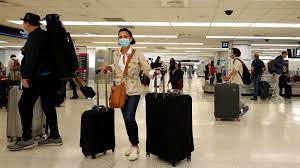Thursday, December 23, 2021

The reality is that the travel recovery is not where many people expected it to be. While TSA numbers amid the holiday season have started to approach 2019 levels, people have generally been restrained about the types of trips they are taking, preferring to visit family and keep leisure trips relatively local.
It’s a fundamental reshaping of the way we explore the world, with profound implications for the destinations recovering fastest and slowest.
According to Jan Freitag, Senior Vice President for Lodging Insights at Global Hospitality Data and Analytics Company the trend shows if someone is leisure-oriented, with access to beaches or mountains,they did well.
If one has typically relied heavily on business tourism, as many cities do, the opposite was true.
According to indexes, these were the best and worst-performing destinations in Europe and the U.S. in 2021. The figures for each destination are based on a hotel industry metric called “revenue per available room,”.
The index divides current performance of the local market by a 2019 benchmark, compares data from Jan 1, 2021, through the end of November vs. the same period two years ago.
Examples whose numbers are greater than 100 mean that the destination made proportionally higher revenues per available room than in 2019; conversely, a destination with a score of 60 would have made only 60% of its revenue per available room, compared with 2019 results.
Best in the U.S.
Gatlinburg, Tenn.: 132.4
Mobile, Ala.: 128.3
Sarasota, Fla.: 122.7
Daytona Beach, Fla.: 122.0
The takeaway: Florida, with its barely existing COVID-19 restrictions, captured the lion’s share of visitation within the U.S.—three of its markets rank in the national Top 5.
That’s not only because people knew they could party like it was 2019. The state’s abundant beaches and golf courses offered COVID-safe relaxation for those who wanted to stay distanced and outdoors.
Plus, consistently low restrictions made travellers feel insulated from the risk of last-minute cancellations or closures. Gatlinburg, Tenn., meanwhile, succeeded, thanks to its location as the gateway to the Great Smoky Mountains—part of a broader thirst for national parks.
Worst in the U.S.
San Francisco: 34.0
San Jose/Santa Cruz, Calif.: 41.2
Washington, D.C.: 49.4
Seattle, Wash.: 52.6
Boston: 52.8
The takeaway: The San Francisco Bay Area and Silicon Valley continue to see more employees working remotely than any other major urban region—not surprising, given its natural reliance on the technology sector.
Distancing also translates into a sharp decline in business travelers, probably the primary culprit behind the two lowest numbers.
Washington suffered a double whammy in that it couldn’t serve as a hub for international diplomacy until U.S. borders reopened in November—but also lost out on domestic visitors as its museums and cultural institutions were closed half the year.
New York, not officially on the list, was the sixth-worst performing market—just slightly behind Boston—though the reopening of International travel delivered a much-needed spike in visitors to the Big Apple in the fall.
Best in Europe
Turkish Riviera: 192.8
Sochi, Russia: 170.2
Turkey Provincial (Ankara and surroundings): 117.0
Italy Central (including Rome, Perugia, and Assisi): 115.2
Istanbul: 112.8
Source: STR
Tags: Global Travel News
Sunday, April 28, 2024
Sunday, April 28, 2024
Monday, April 29, 2024